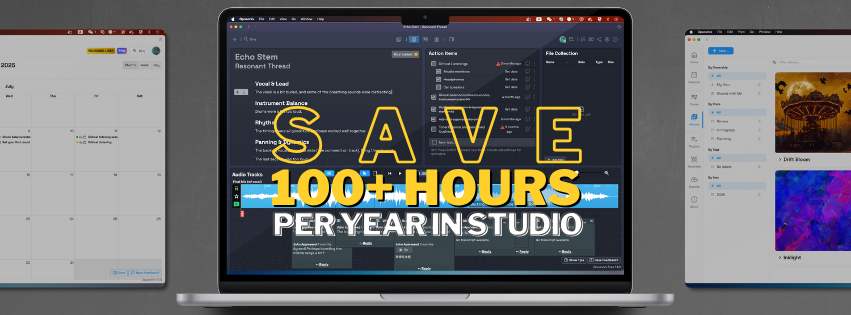Save 100+ Hours in the Studio:
6 Workflow Tips for Producers & Engineers
Table of Contents
Producers and engineers spend a lot of time on tasks outside of mixing—sharing files, collecting feedback, or tracking revisions. These steps are necessary, but they can also pull focus from the creative work.
While building Opusonix, we’ve learned that small workflow improvements—like faster album planning or clearer feedback tools—can add up to big time savings. In this post, we’ll share a few approaches we’ve built that might also inspire ways to simplify your own studio process and free up more time for music.
1. Plan Albums Without the Hassle of Manual Uploads
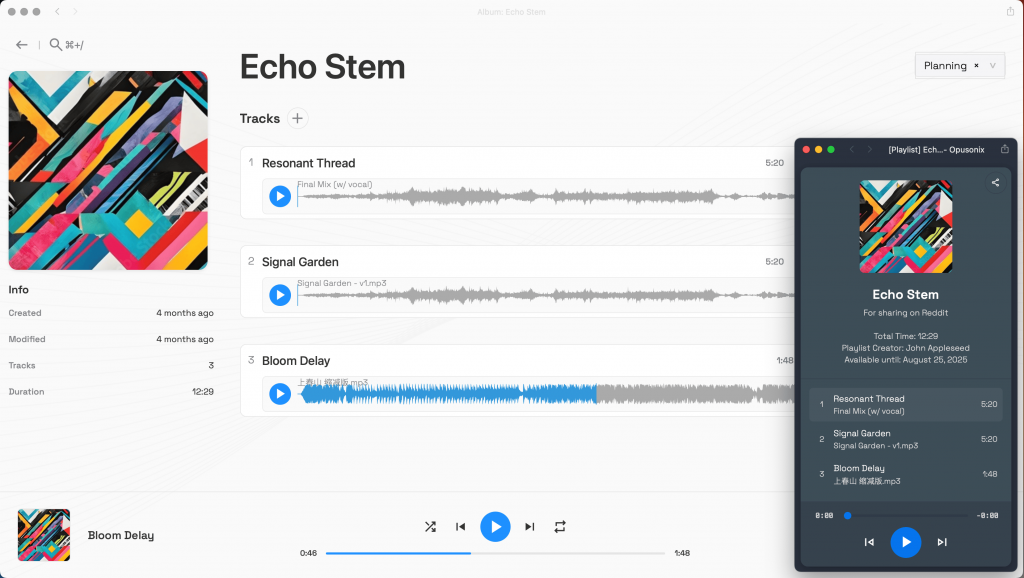
Many producers use SoundCloud or Dropbox playlists to simulate an album flow. But that often means re-uploading every time you make a change. A better approach is to use an album planning tool where you can drop in mixes instantlyand hear the sequence in a player-like interface. Instead of spending 20–30 minutes setting up, you’ll have your album arrangement ready to audition within seconds.
Why it matters: You can test running orders, transitions, and overall pacing as you go, making album planning an ongoing creative process rather than a separate admin task.
2. Comment Directly on the Timeline (Text or Voice)
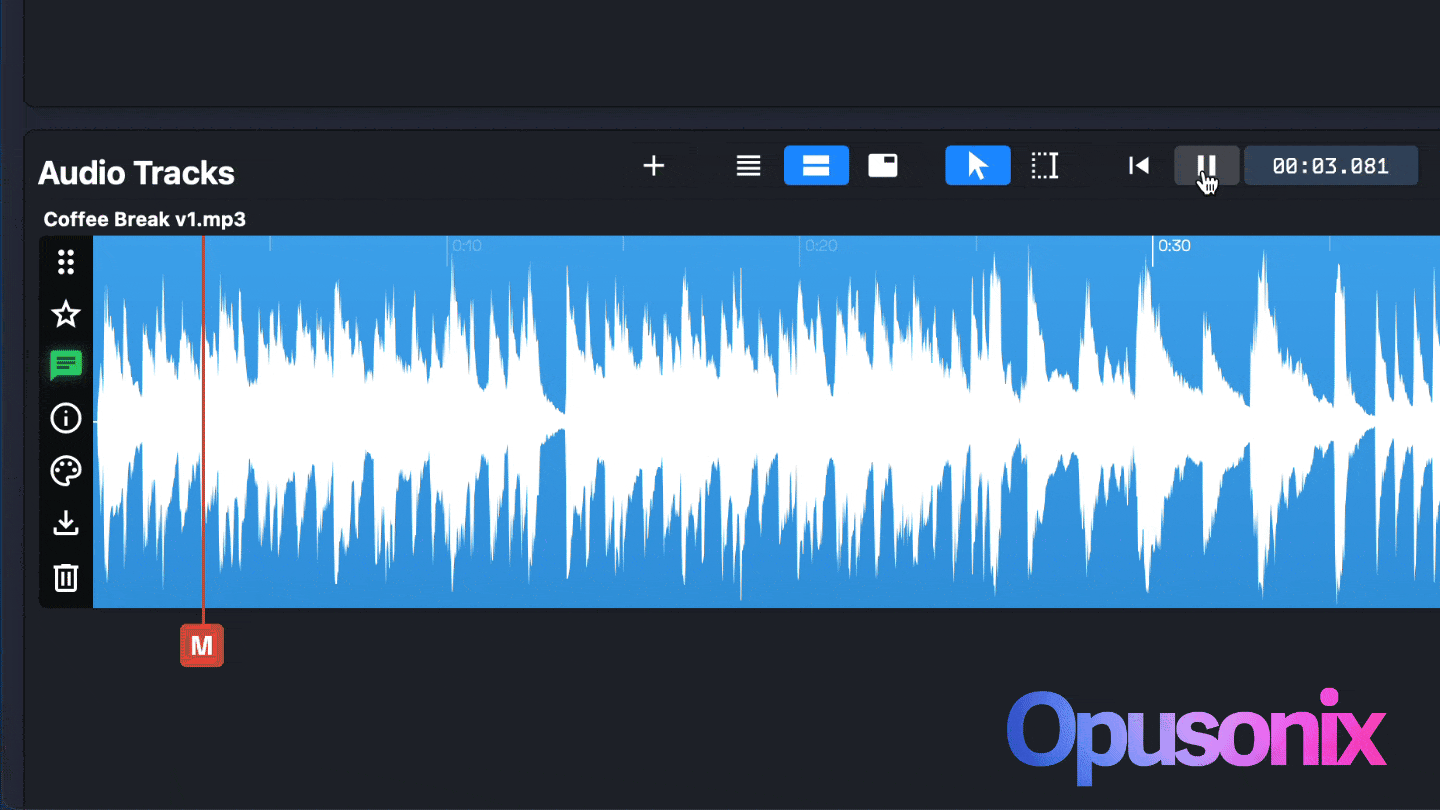
Traditional feedback workflows look like this: listen to the track, pause, write notes in email with rough timestamps, and hope the client knows what you meant. It’s slow, and miscommunication is almost guaranteed.
A faster way? Drop comments directly on the waveform—either typed or recorded as voice notes. Even better, use a simple shortcut (like pressing M) to leave markers without interrupting playback. You can come back later, add context, and keep moving.
Why it matters: What once took 30 minutes of scattered note-taking now takes just a few minutes, and everyone’s feedback lives right on the track. Voice notes also let you capture subtle ideas that are hard to type out.
3. Notify Collaborators in One Click

After a mix revision, the last thing you want to do is open your email client, find everyone’s addresses, and draft an update message. A streamlined workflow gives you a “one-click update” option: upload a new mix, add notes, then push out an email notification with one button.
Why it matters: A 5–10 minute manual task is reduced to 30 seconds, and you can get back to mixing instead of inbox juggling.
4. Built-In A/B Testing Between Mix Versions
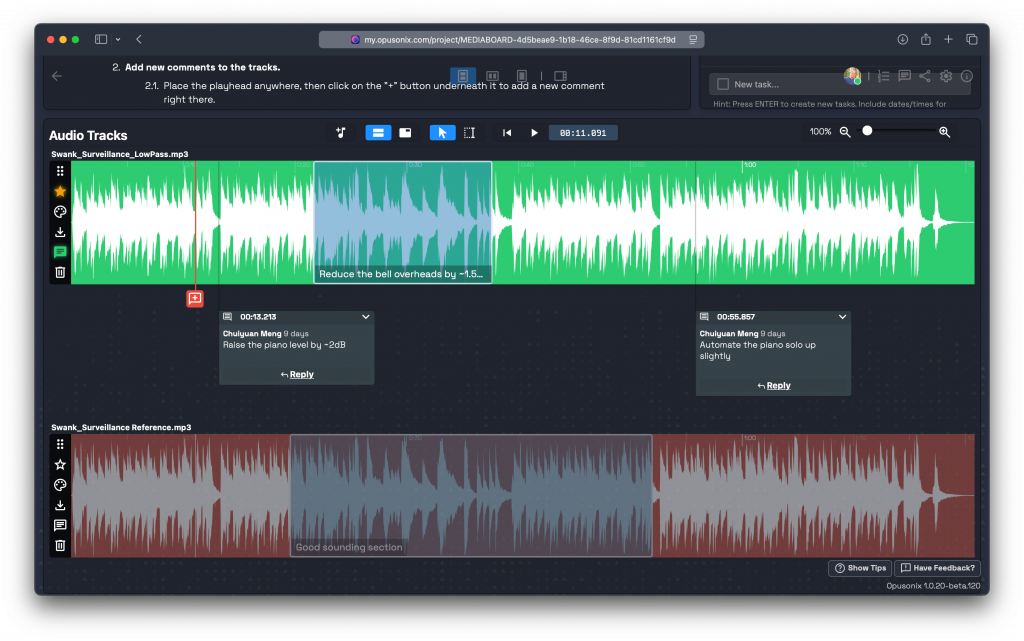
Clients often struggle to hear subtle differences between mix revisions, especially when flipping back and forth between multiple audio players. Instead of setting up a DAW session or juggling browser tabs, use an integrated tool that lets you switch seamlessly between versions in one player.
Why it matters: You save 10–15 minutes of setup every time you need to compare versions, and your client makes clearer decisions because the differences are obvious in context.
5. Keep Notes, Tasks, and Files in One Place

A lot of wasted studio time comes from searching: Which Google Doc has the latest feedback? Which Dropbox link has the correct version? Did the client send that reference in Slack or email?
The solution is to centralize everything—mixes, notes, checklists, and reference files—inside a single project workspace. With a static project link, you and your client never need to dig through email threads again.
Why it matters: What usually takes 10+ minutes to set up (finding links, lining up references, double-checking files) now takes zero. Everything you need is already in the track editor.
6. Use Quick Navigation Shortcuts
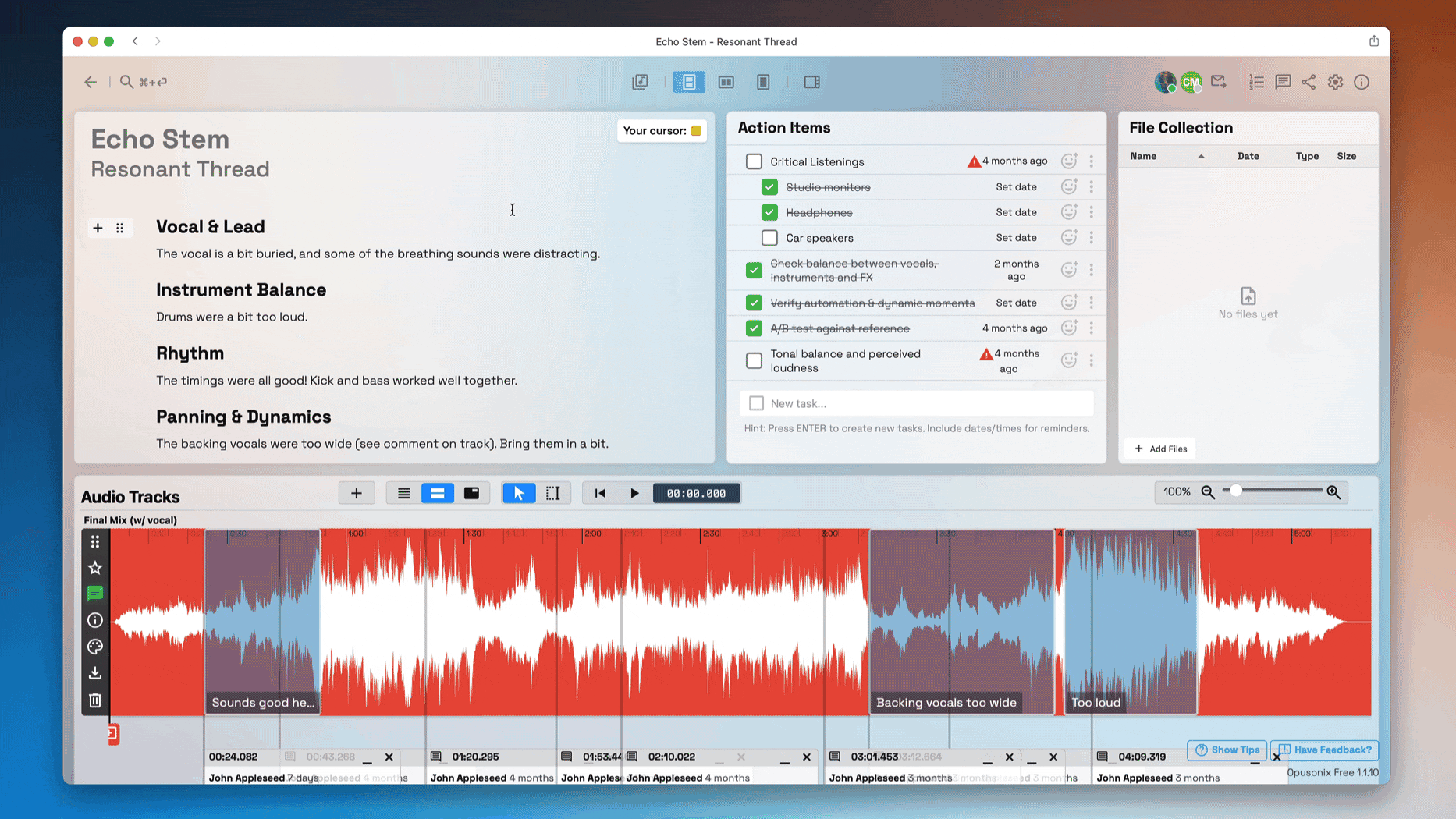
When juggling multiple projects, navigation eats up more time than you think. Instead of clicking through menus, a fuzzy search shortcut (like Cmd+Enter) lets you instantly jump to any track, project, or album with just a few keystrokes.
Why it matters: A 30-second navigation process becomes a 3-second action—multiplied by dozens of context switches per session, that adds up to real time savings.
Final Thoughts
As developers working closely with producers and engineers, we’ve seen how much time can disappear into small but repetitive workflow tasks—like re-uploading mixes, sending update emails, or searching for scattered notes. Our goal with Opusonix has simply been to remove some of that friction so you can focus more on the creative work that really matters.
The ideas shared here—whether it’s faster album planning, timeline-based comments, one-click notifications, or quick navigation—are just some of the ways we’ve tried to make the review process smoother and less time-consuming.
Every studio has its own way of working, and these tools may fit differently depending on your process. But if even one or two of these approaches help you save a few minutes per project, those minutes can quickly add up to hours, and eventually weeks, of time gained back each year.
We’re continually learning from the producers and engineers who use Opusonix, and we’d love to hear how you approach your workflow challenges too.
Try It on Your Next Project
If you’re looking for a simpler way to handle mix reviews and project collaboration, we’d love for you to try Opusonix on your next project. It’s free to get started, and you’ll have everything—mixes, notes, tasks, and version comparisons—in one place.
